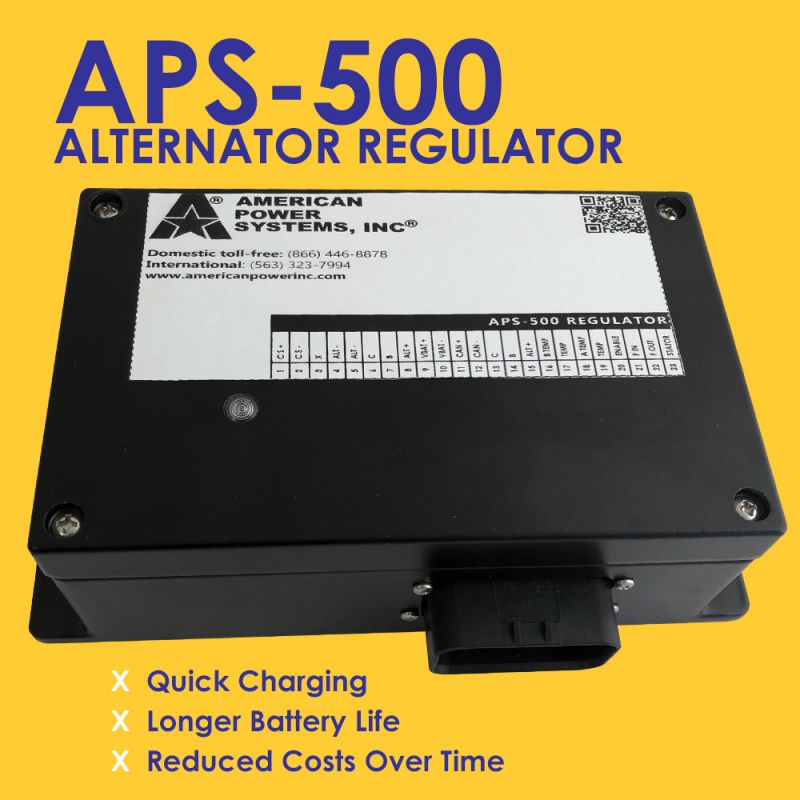APS is preparing to launch a new, multi-stage regulator to the international defense and security industry Feb. 17-21 at IDEX, Abu Dhabi.
In the United States, the new unit will be on display a bit earlier at the Seattle RV Show Feb. 7-10 at the CenturyLink Field Event Center.
The compact, fully configurable APS-500 alternator regulator represents the state of the art in DC charge controllers, providing optimal battery charging and care. The APS-500 can be used in a wide variety of applications where quick, effective charging and battery longevity are important.
As we release the APS-500, we’re anticipating the response from current and potential customers. And, as with any new product, we know there will be excitement and many questions. We hope to answer a few high-level questions in the Q&A that follows.
Let’s get to it.
1. How is this regulator different from others on the market today?
Unlike most multi-stage regulators, the APS-500 can use both current and voltage to regulate charging. These advanced units can use multiple data points—including battery voltage, current in/out, and battery and alternator temperature—to charge virtually any commercially available battery type, including the latest in lithium-ion technology.
2. How is performance improved specifically?
By gathering more information from the battery and alternator—and with system communication via control area network (CAN) or other established programs—the regulator helps effectively charge the house batteries, avoiding over- or under-charging, and enabling faster charging than other solutions.
With the APS-500, batteries can achieve the ideal charging rates published by battery manufacturers.
3. What are the benefits associated with more effective, efficient battery charging?
There are a number of benefits realized through better battery care. For one thing, house batteries represent a significant monetary investment for most applications. Battery care from this perspective is about protecting that investment and saving money over time by helping batteries last longer.
Batteries that last longer also save on the maintenance costs and downtime associated with frequent replacement, which can quickly surpass equipment costs.
Another benefit from the standpoint of improved efficiency is quicker charging. Most deep-cycle batteries benefit from being completely re-charged before we start using them again. This means that when the time for re-charging is short, and batteries aren’t completely charged before we start drawing on them, the life of the battery can be compromised. In this way, quick, efficient charging lets us get back in motion faster—always a plus—and without harming batteries over the long term.
4. How do the alternator and regulator work together for optimal charging?
When using the CAN protocol or other custom programming options built into the APS-500, this regulator will increase the alternator’s efficacy and efficiency in several ways. For one, alternator output can be limited based on temperature to protect batteries, alternator, or both. In addition, the APS-500 also enables maximum alternator output at any given RPM.
5. Does the APS-500 meet MIL-SPEC?
The current APS-500 was not designed to meet MIL-SPEC; however, APS is working now to build upon this unit and plans to release a military version later in 2019. We’re advising interested parties to subscribe to our e-newsletter to stay abreast of developments in this area.
It should be noted that APS’s current product offerings include a military-style regulator with MIL-SPEC connectors. You can view that product here: 28RGXTF-M.
Have other questions? Get in touch!
Update (Feb. 5, 2019): Read the press release on our website or from PR Newswire.
